She-Kon
Senior Member
Part 7 Prep on the hull before glassing
Had to chop just one more tiny eensy weensy little hole in the boat before I got to some serious fiberglass work. Having had a couple of situations on our old boat with the depth sounder transducer on the transom I decided to have a forward through hull transducer this time. Airmar P76 I believe it is. This requires no core between it and the bottom of the boat so a hole had to be cut to remove the core.
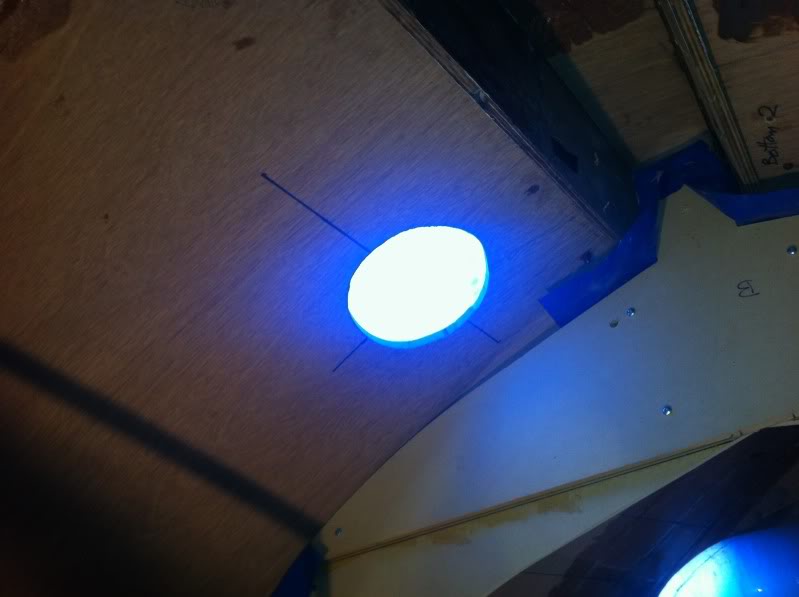
Yup, that's progress, more holes in the hull! I used the cutout covered in some plastic & peel ply to fill the hole and glassed over top with a couple of pieces of tape.

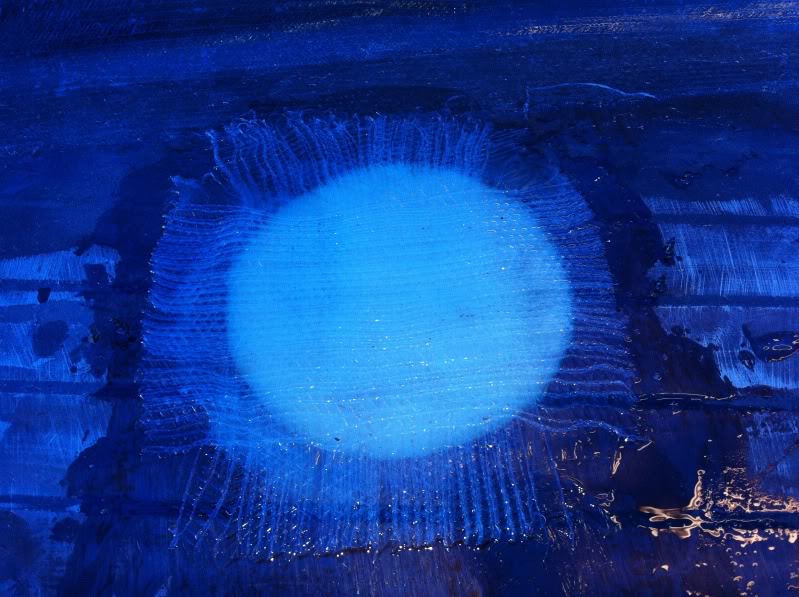
Started to build up the area around the bow thruster holes to give them some shape that hopefully will direct water flowing over and not into the tubes. That's the theory anyways.
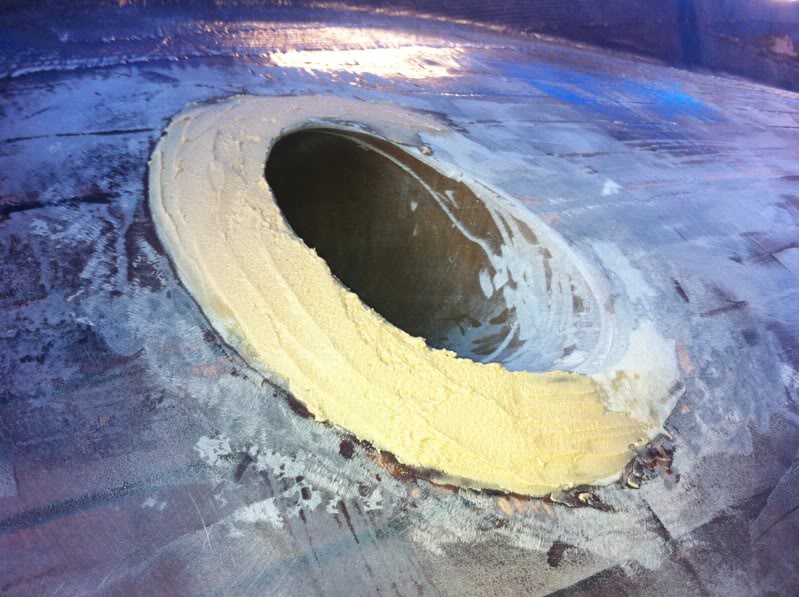
First up for glass was the keel. Don't worry, that's not bubbles in the glass, that's peel ply overtop of the glass. It won't conform to curves as nicely as fiberglass does.
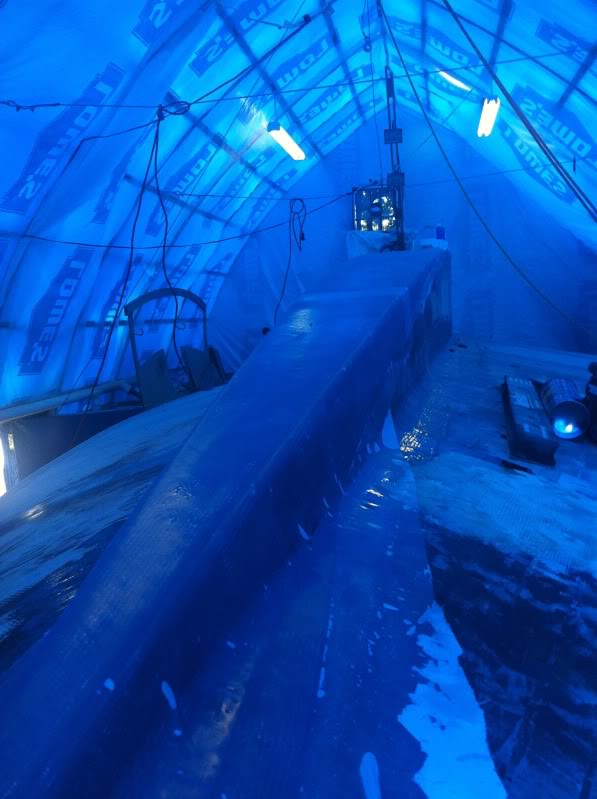
As well as the carbon fiber you saw earlier covering the bow there's an extra layer of Saertex on the stem and bottom of the keel. Why? well I have it and it's not a whole lot of extra work to put it in now. One extra layer of insurance maybe in case we hit a submerged D8 dozer or something!
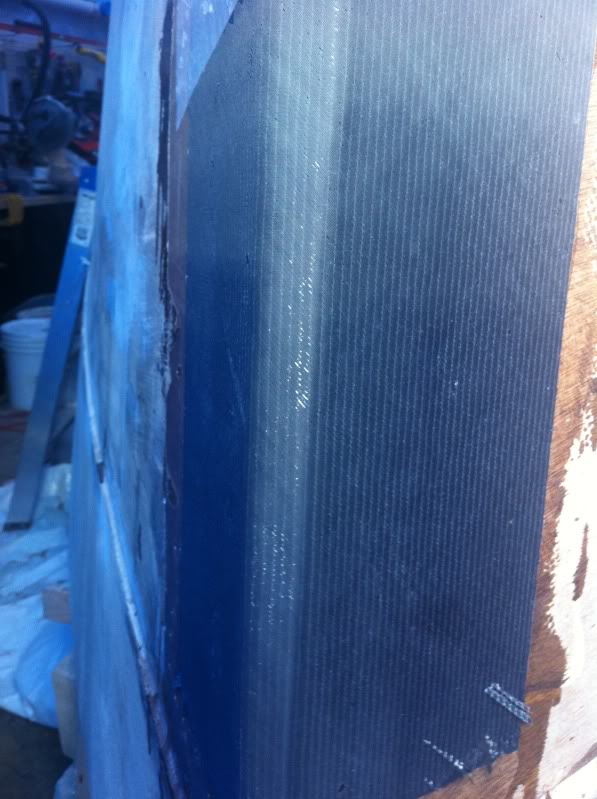
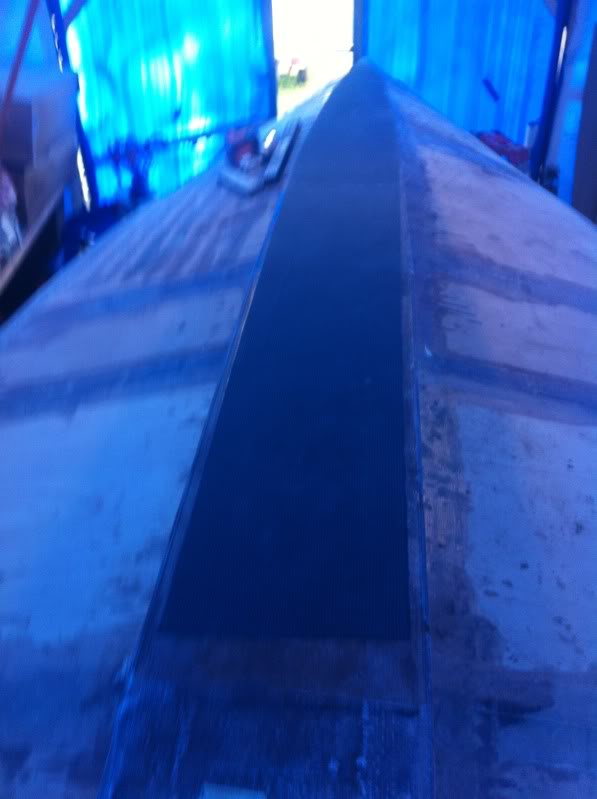
All the seams were double taped and faired a bit before any glass was laid on the hull. I know it's kind of ugly at this point but all the prep work is done except for some sanding then the glass gets rolled out.

Standby for part 7b, glassing the hull.
Had to chop just one more tiny eensy weensy little hole in the boat before I got to some serious fiberglass work. Having had a couple of situations on our old boat with the depth sounder transducer on the transom I decided to have a forward through hull transducer this time. Airmar P76 I believe it is. This requires no core between it and the bottom of the boat so a hole had to be cut to remove the core.

Yup, that's progress, more holes in the hull! I used the cutout covered in some plastic & peel ply to fill the hole and glassed over top with a couple of pieces of tape.


Started to build up the area around the bow thruster holes to give them some shape that hopefully will direct water flowing over and not into the tubes. That's the theory anyways.

First up for glass was the keel. Don't worry, that's not bubbles in the glass, that's peel ply overtop of the glass. It won't conform to curves as nicely as fiberglass does.

As well as the carbon fiber you saw earlier covering the bow there's an extra layer of Saertex on the stem and bottom of the keel. Why? well I have it and it's not a whole lot of extra work to put it in now. One extra layer of insurance maybe in case we hit a submerged D8 dozer or something!


All the seams were double taped and faired a bit before any glass was laid on the hull. I know it's kind of ugly at this point but all the prep work is done except for some sanding then the glass gets rolled out.

Standby for part 7b, glassing the hull.

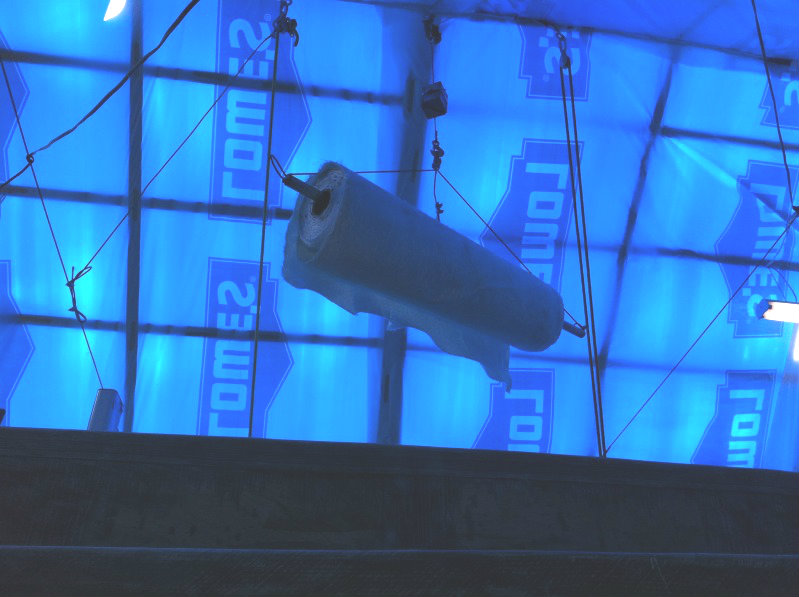
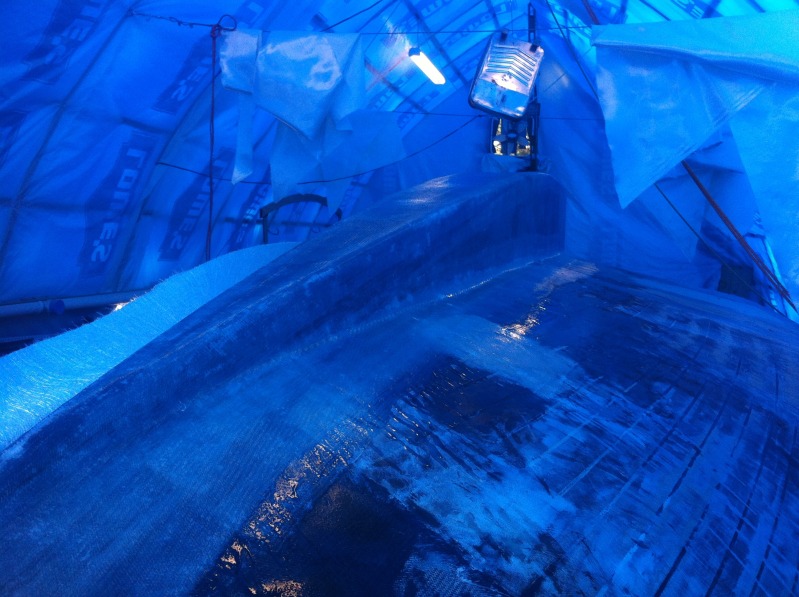
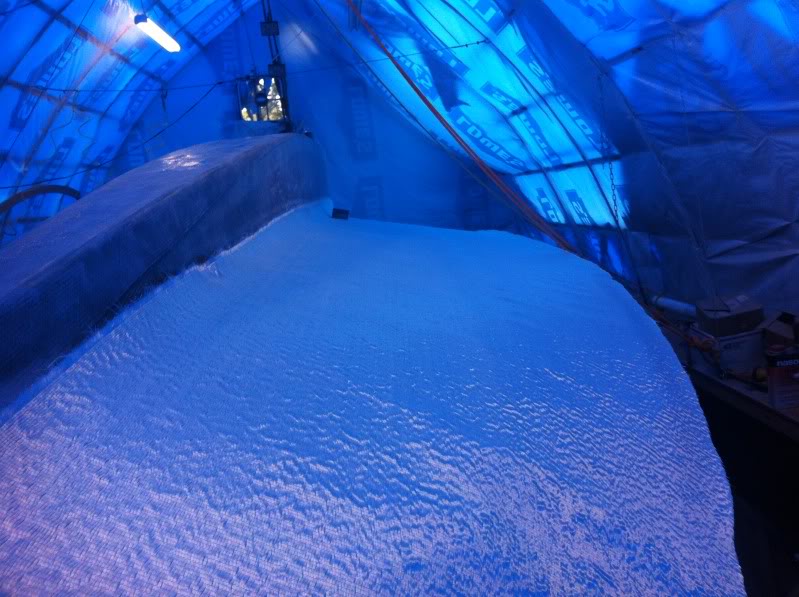
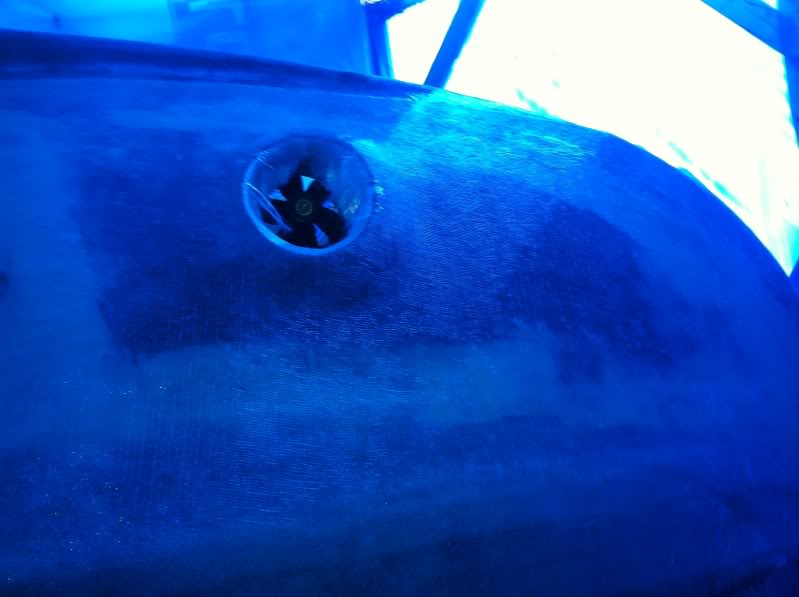

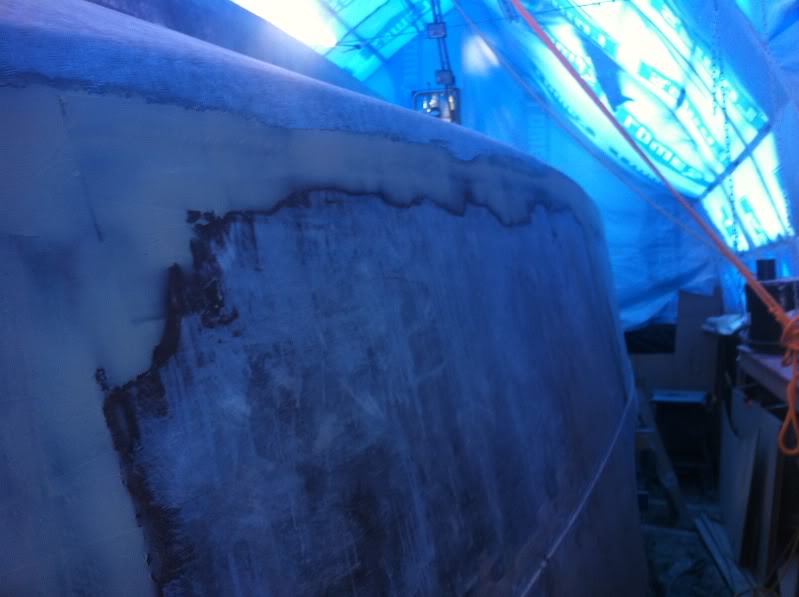
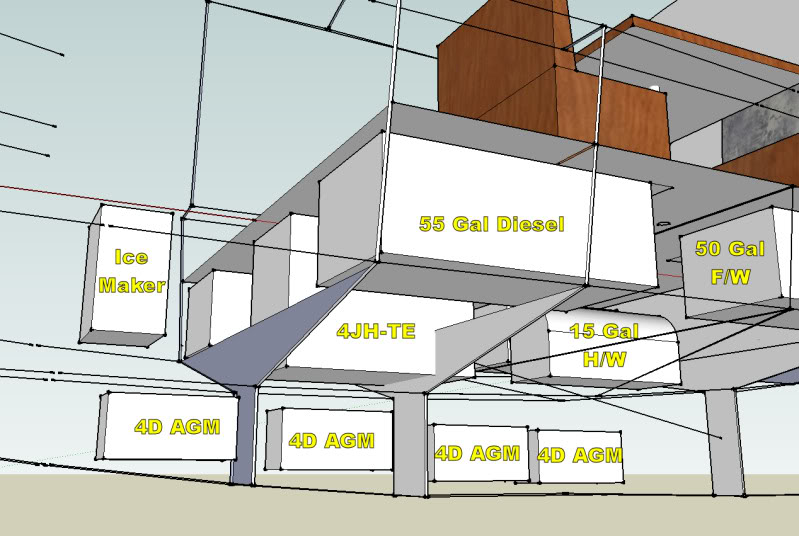

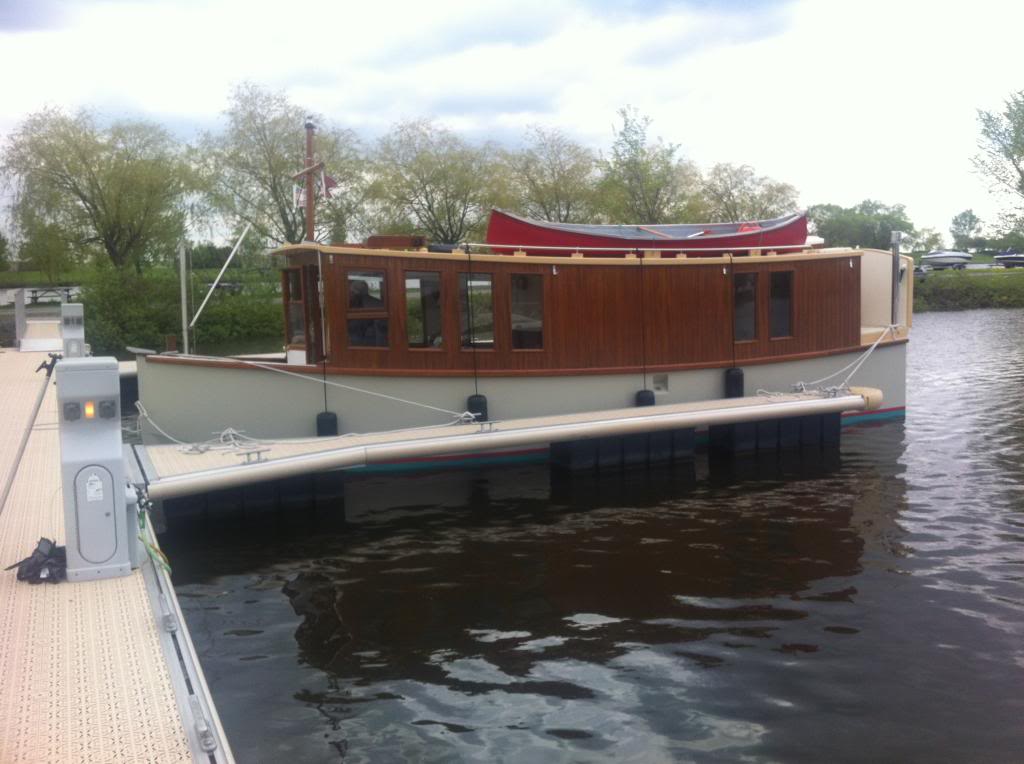

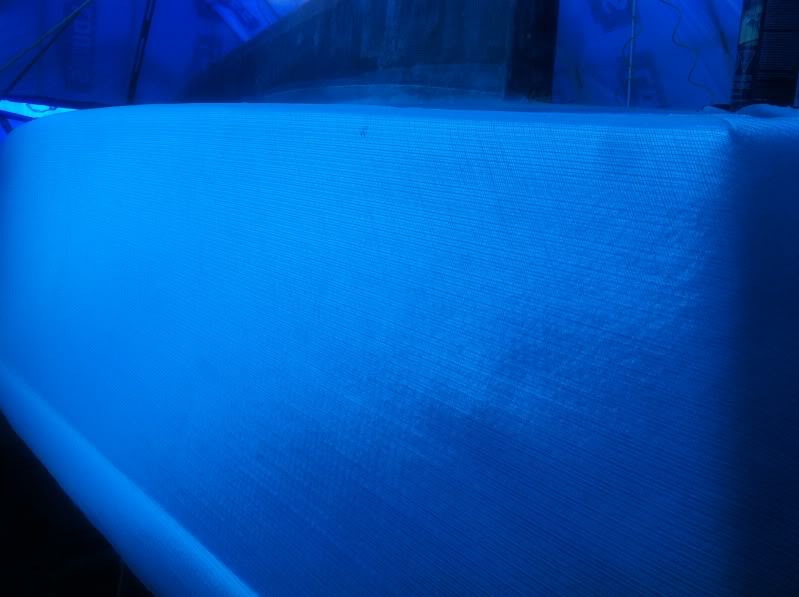
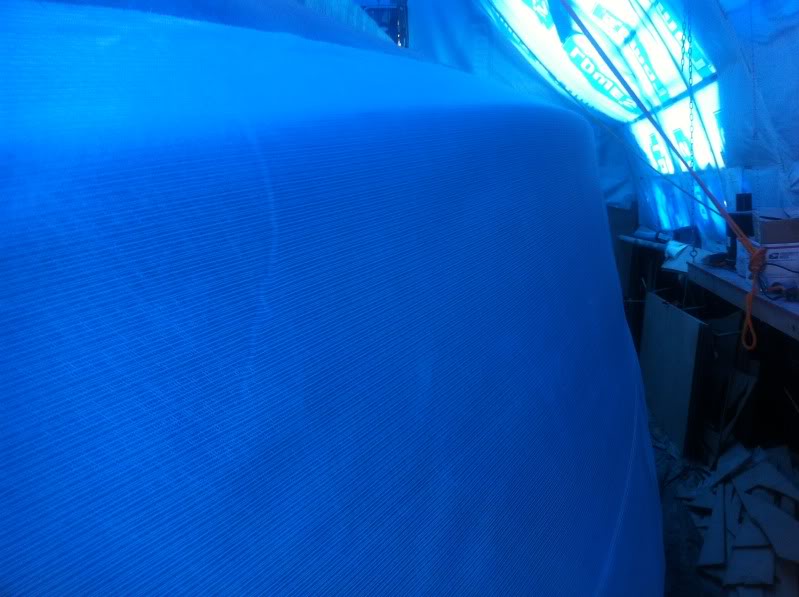


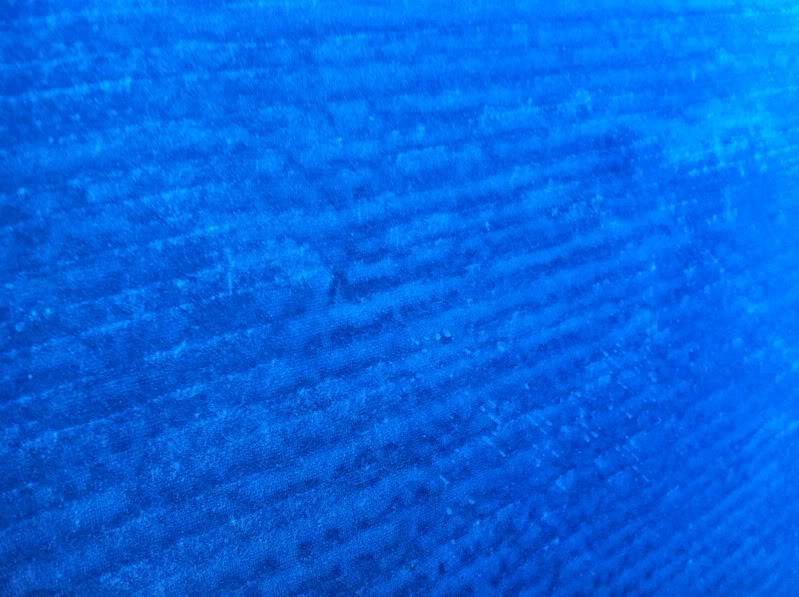
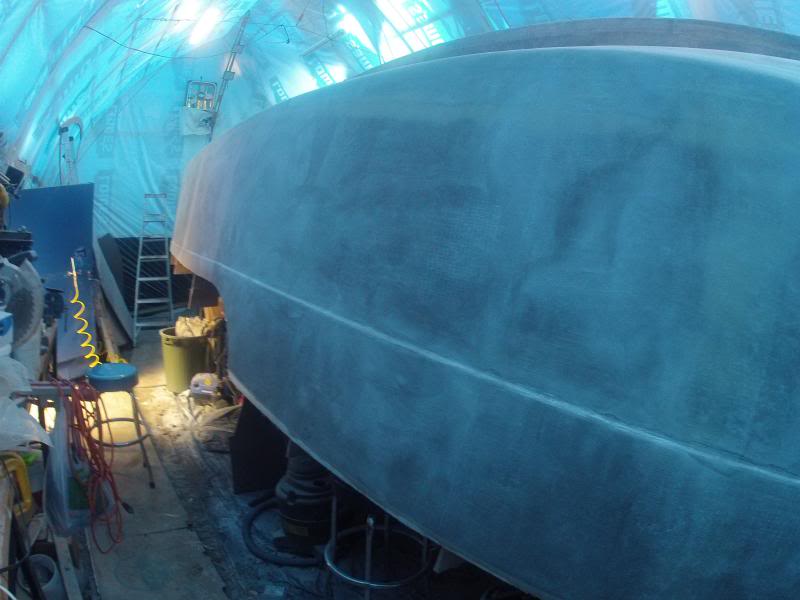
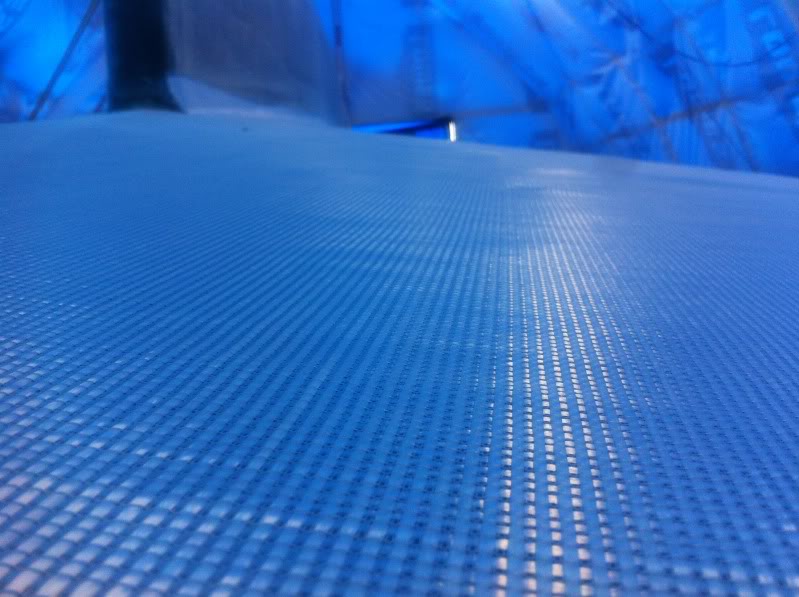
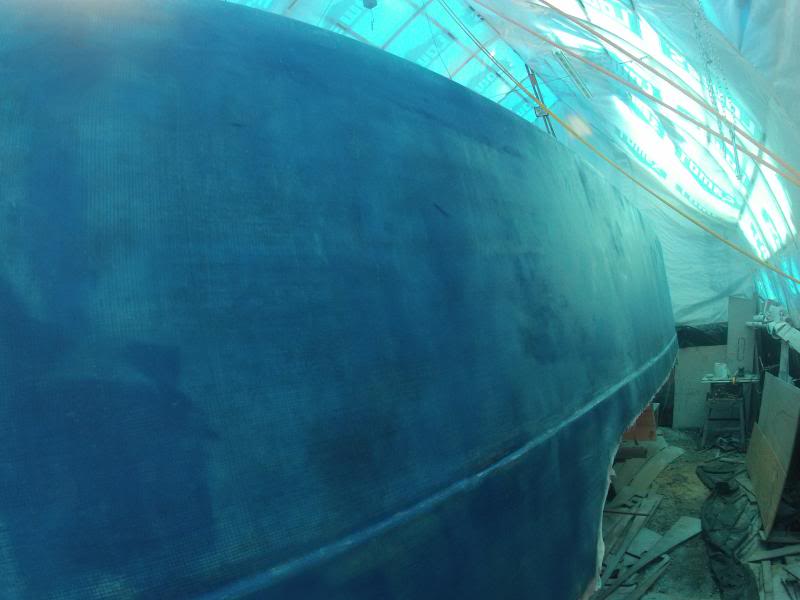
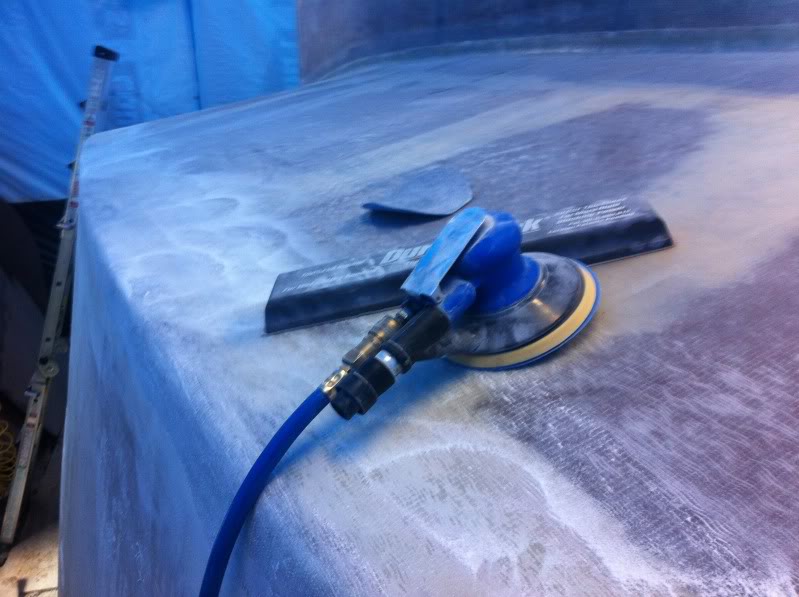
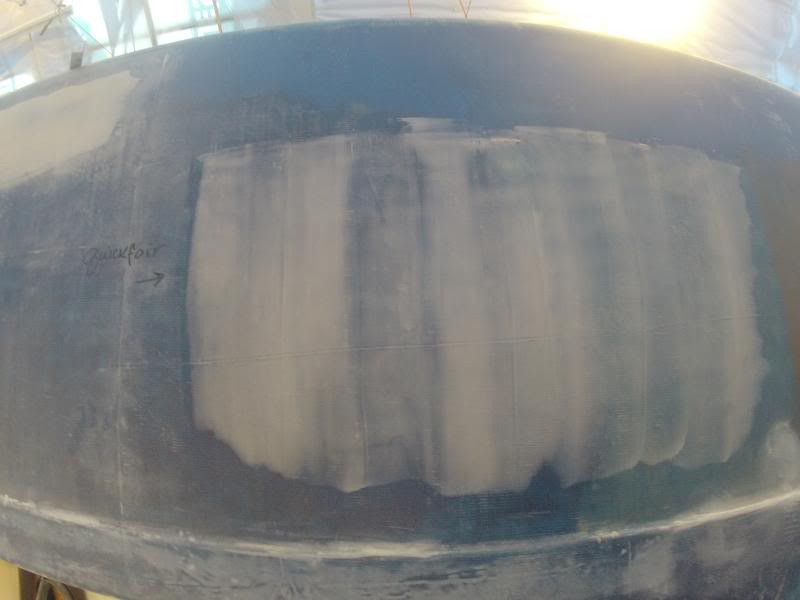
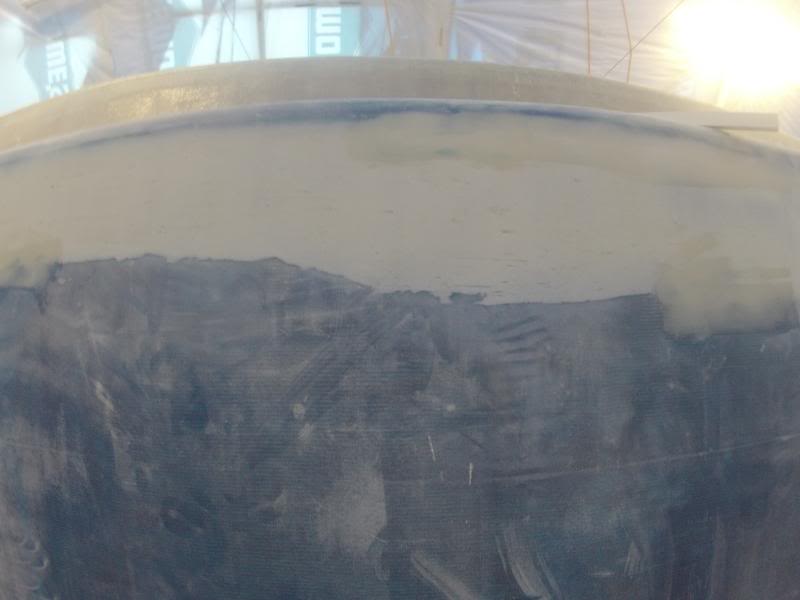
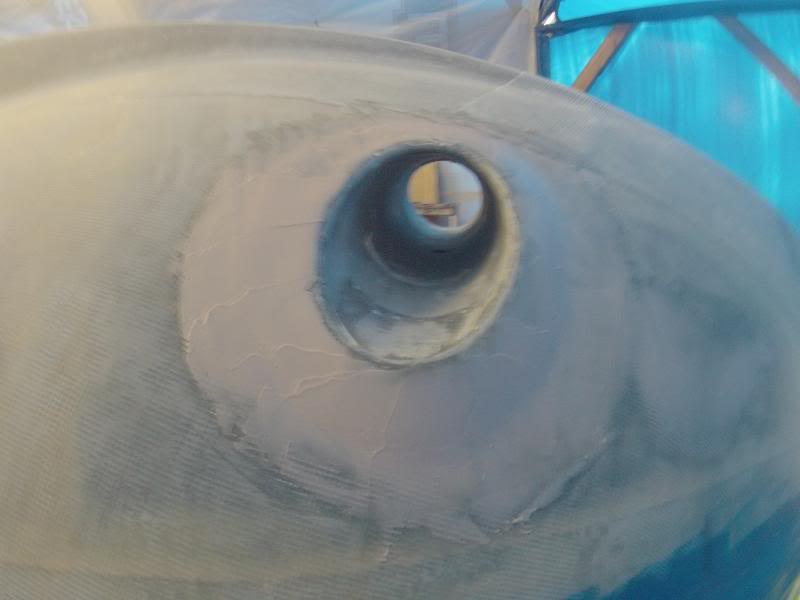
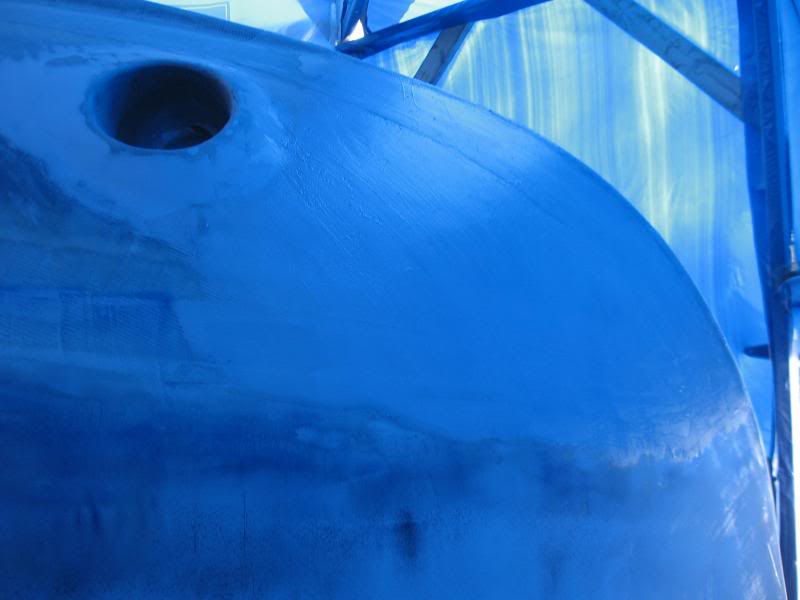

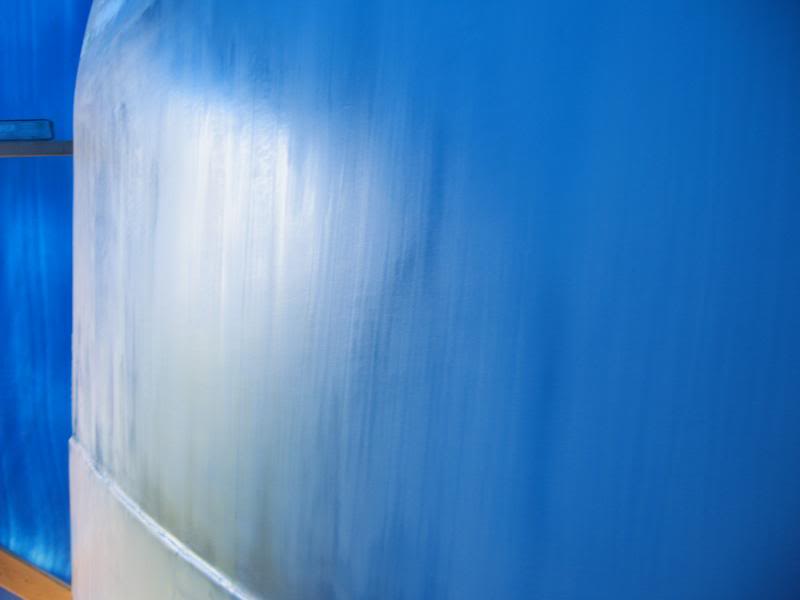
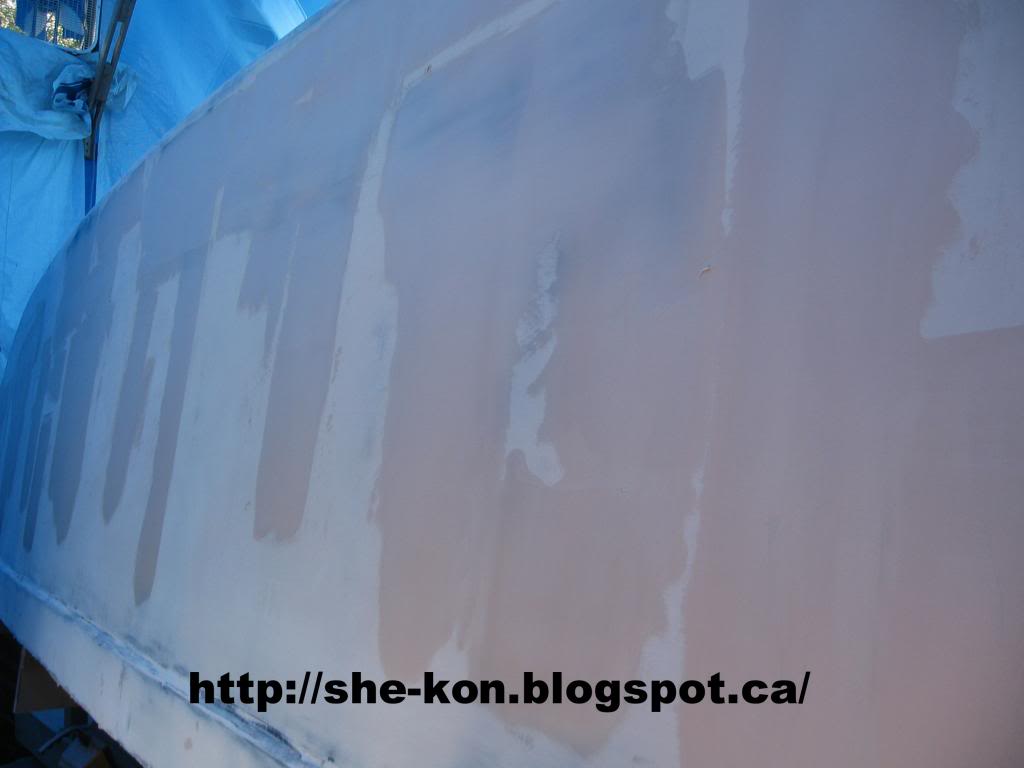

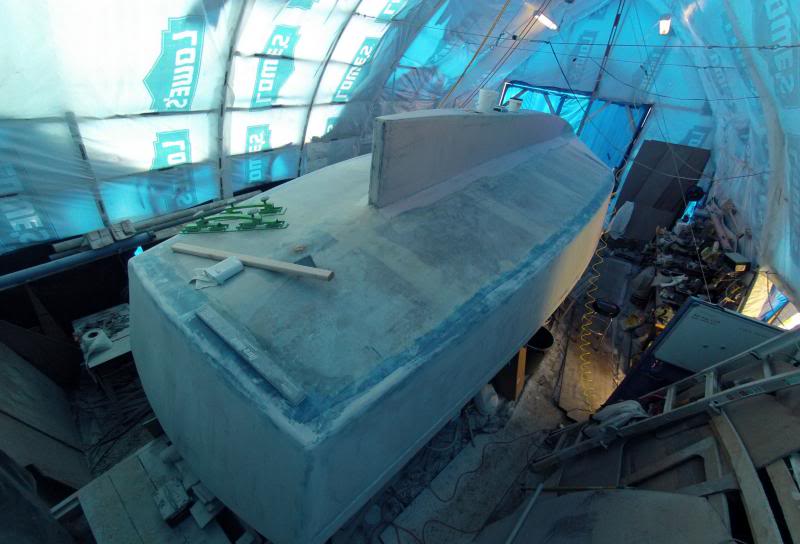

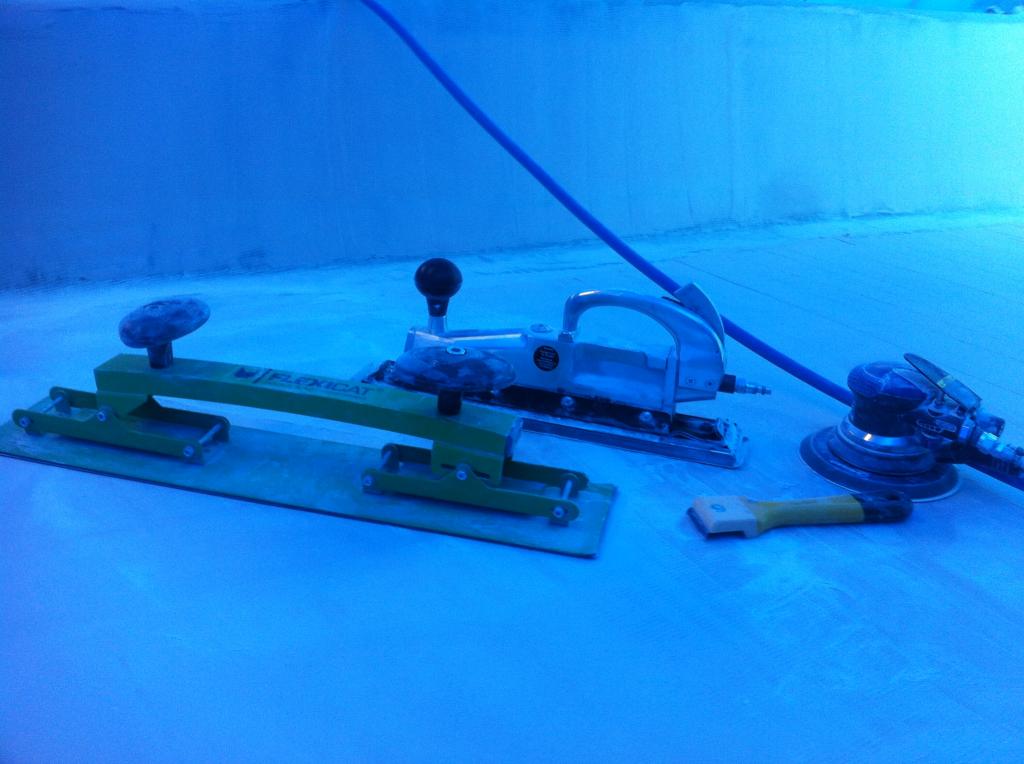




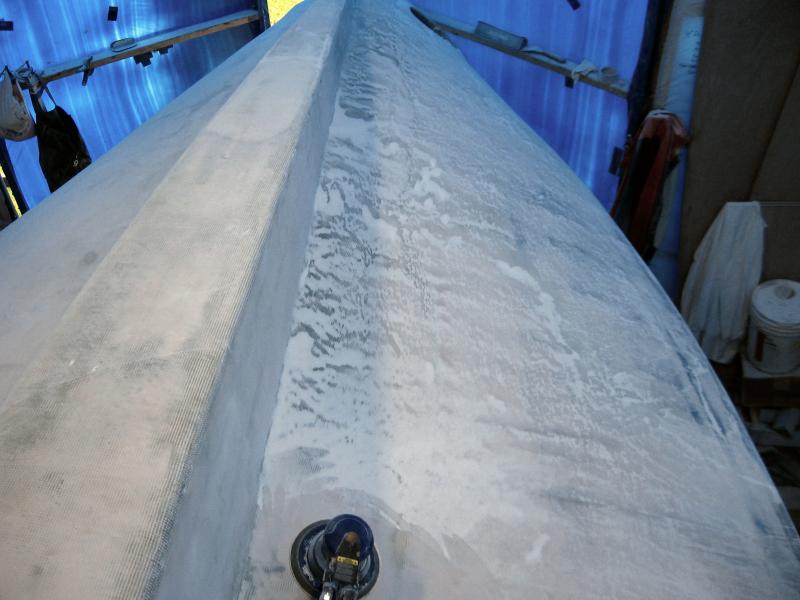

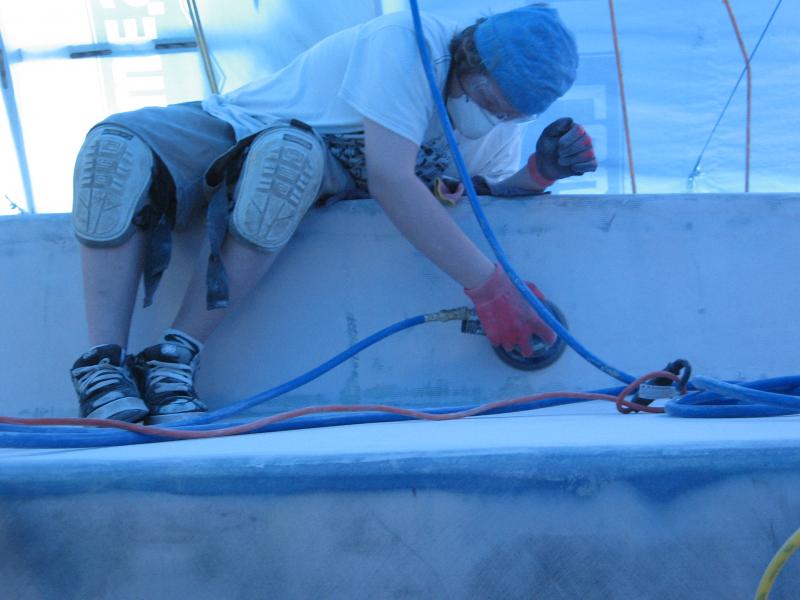


 I think I'll have a local machine shop reverse engineer a longer shaft for the Python Drive. Still gonna be spendy but whoever said building a boat was cheap eh?
I think I'll have a local machine shop reverse engineer a longer shaft for the Python Drive. Still gonna be spendy but whoever said building a boat was cheap eh?